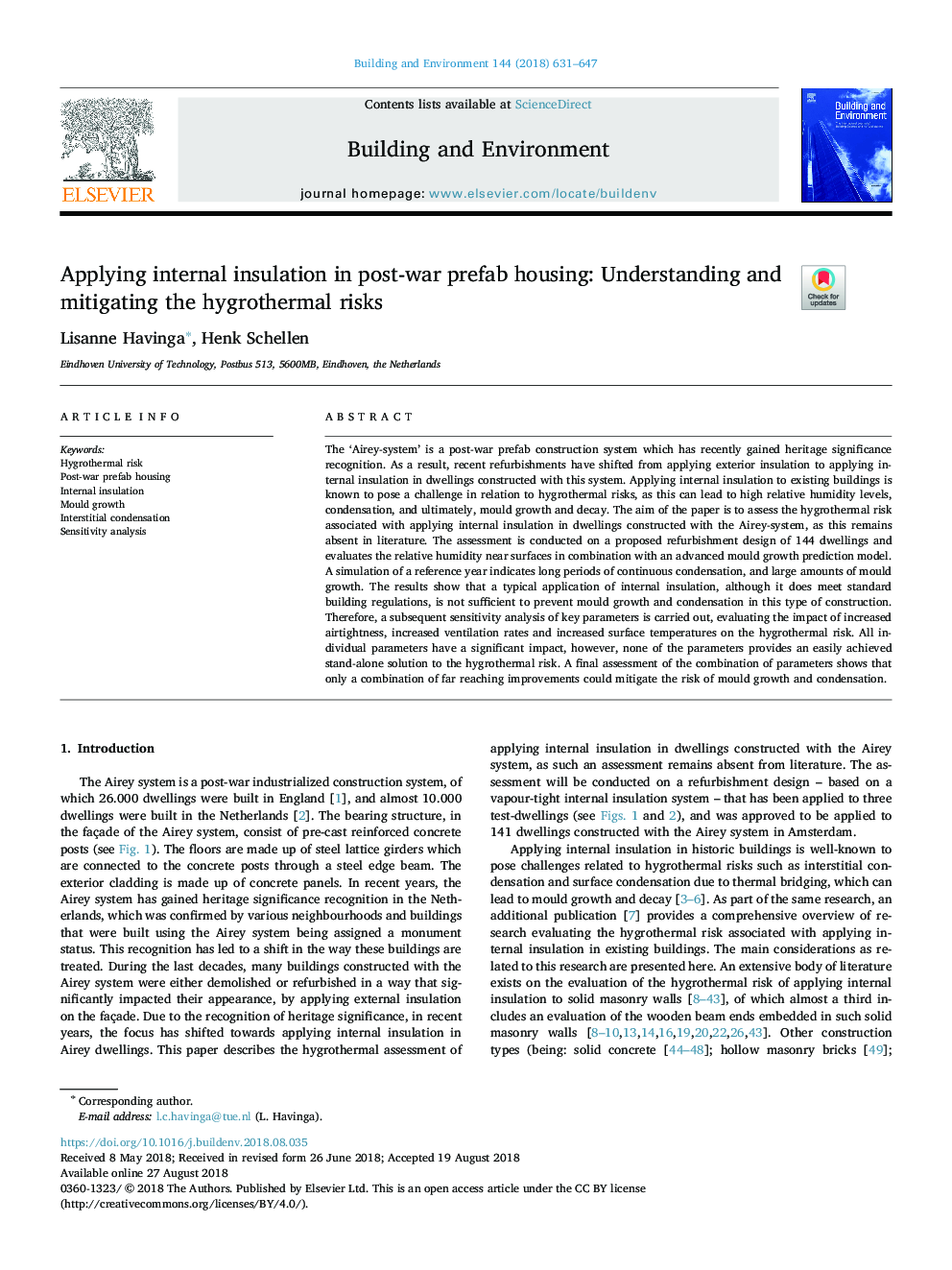| Article ID | Journal | Published Year | Pages | File Type |
|---|---|---|---|---|
| 11000982 | Building and Environment | 2018 | 17 Pages |
Abstract
The 'Airey-system' is a post-war prefab construction system which has recently gained heritage significance recognition. As a result, recent refurbishments have shifted from applying exterior insulation to applying internal insulation in dwellings constructed with this system. Applying internal insulation to existing buildings is known to pose a challenge in relation to hygrothermal risks, as this can lead to high relative humidity levels, condensation, and ultimately, mould growth and decay. The aim of the paper is to assess the hygrothermal risk associated with applying internal insulation in dwellings constructed with the Airey-system, as this remains absent in literature. The assessment is conducted on a proposed refurbishment design of 144 dwellings and evaluates the relative humidity near surfaces in combination with an advanced mould growth prediction model. A simulation of a reference year indicates long periods of continuous condensation, and large amounts of mould growth. The results show that a typical application of internal insulation, although it does meet standard building regulations, is not sufficient to prevent mould growth and condensation in this type of construction. Therefore, a subsequent sensitivity analysis of key parameters is carried out, evaluating the impact of increased airtightness, increased ventilation rates and increased surface temperatures on the hygrothermal risk. All individual parameters have a significant impact, however, none of the parameters provides an easily achieved stand-alone solution to the hygrothermal risk. A final assessment of the combination of parameters shows that only a combination of far reaching improvements could mitigate the risk of mould growth and condensation.
Related Topics
Physical Sciences and Engineering
Energy
Renewable Energy, Sustainability and the Environment
Authors
Lisanne Havinga, Henk Schellen,
